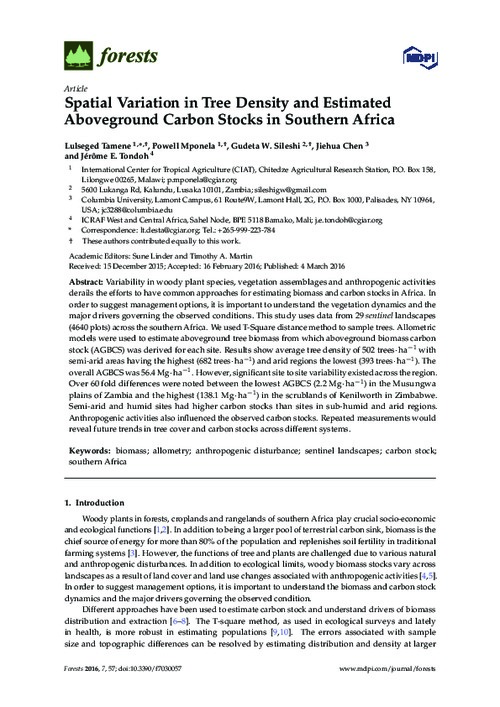Resource information
Variability in woody plant species, vegetation assemblages and anthropogenic activities derails the efforts to have common approaches for estimating biomass and carbon stocks in Africa. In order to suggest management options, it is important to understand the vegetation dynamics and the major drivers governing the observed conditions. This study uses data from 29 sentinel landscapes (4640 plots) across the southern Africa. We used T-Square distance method to sample trees. Allometric models were used to estimate aboveground tree biomass from which aboveground biomass carbon stock (AGBCS) was derived for each site. Results show average tree density of 502 trees·ha−1 with semi-arid areas having the highest (682 trees·ha−1) and arid regions the lowest (393 trees·ha−1). The overall AGBCS was 56.4 Mg·ha−1. However, significant site to site variability existed across the region. Over 60 fold differences were noted between the lowest AGBCS (2.2 Mg·ha−1) in the Musungwa plains of Zambia and the highest (138.1 Mg·ha−1) in the scrublands of Kenilworth in Zimbabwe. Semi-arid and humid sites had higher carbon stocks than sites in sub-humid and arid regions. Anthropogenic activities also influenced the observed carbon stocks. Repeated measurements would reveal future trends in tree cover and carbon stocks across different systems.


